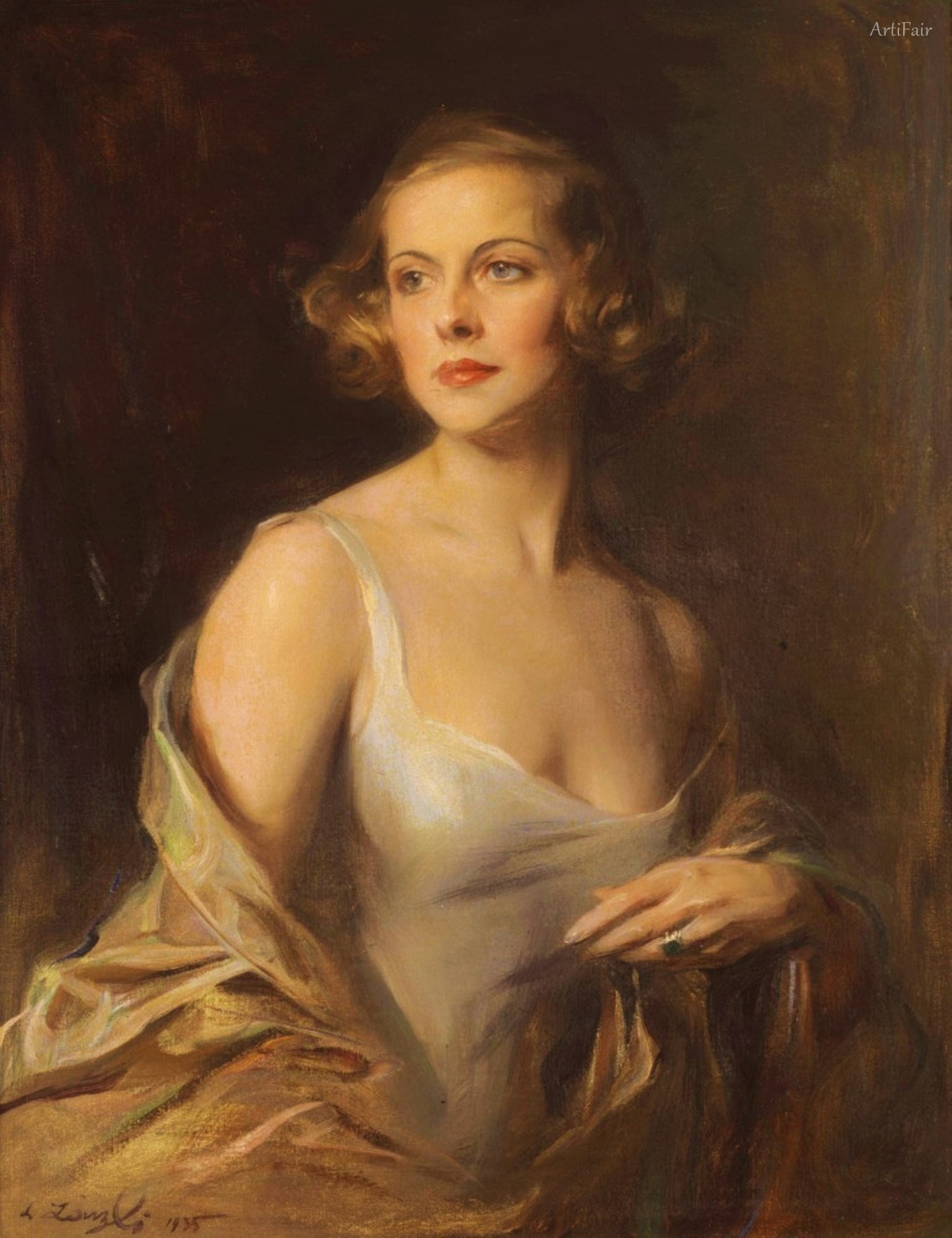

Philip de László
GB
167
Artworks
1869 - 1937
Lifespan
Artist Biography
Philip Alexius de László, born Fülöp Laub in Budapest, Hungary, on April 30, 1869, rose from humble beginnings to become one of the most sought-after portrait painters of the early 20th century. The eldest son of a Jewish tailor and seamstress, he showed artistic promise early on. At fifteen, he was apprenticed to a photographer while simultaneously studying at the School of Applied Arts. His talent secured him a place at the National Academy of Art in Budapest, where he studied under masters like Bertalan Székely and Károly Lotz. Seeking to refine his craft, he pursued further studies at the prestigious academies of Munich and Paris. In a patriotic gesture common at the time, he and his brother changed their surname from Laub to the Hungarian László in 1891, a name that would soon become synonymous with aristocratic portraiture.
De László's ascent in the art world was swift. A pivotal connection with Elek Lippich, an official in Hungary's ministry of education, led to his first royal commission in 1894 to paint the Bulgarian royal family. This marked the beginning of his career as a painter to the courts of Europe. However, it was his 1900 portrait of the aging Pope Leo XIII that catapulted him to international fame. The work, lauded for its profound insight and technical brilliance, earned him a Grand Gold Medal at the Paris International Exhibition. This single achievement solidified his reputation and opened the doors to commissions from the highest echelons of society, effectively transitioning him from a painter of historical scenes to the preeminent portraitist of his generation, often hailed as the successor to John Singer Sargent.
In 1900, a landmark year for his career, de László also married the Anglo-Irish socialite Lucy Guinness, whom he had met years earlier in Munich. After a period in Vienna, the couple settled in London in 1907, which would remain their base for the rest of his life. He became a naturalized British subject in 1914. His success in Britain was immediate, with commissions from King Edward VII and numerous members of the aristocracy. In recognition of his contributions to the arts and his status, he was ennobled by Emperor Franz Joseph I of Austria in 1912, adopting the title "de László". Despite his London home, his career was ceaselessly international, as he traveled the globe to paint the most influential figures of his time, from Kaiser Wilhelm II to U.S. Presidents Theodore Roosevelt and Woodrow Wilson.
De László's artistic process was a masterful blend of technical precision and psychological acuity. Working in the "Grand Manner," his style evolved from a restrained, academic realism to a more expressive and dynamic approach characterized by fluid brushwork and rich color. He believed a portrait's success lay in capturing the sitter's essential character. To achieve this, he engaged his subjects in lively conversation, observing their natural mannerisms. He often began with swift charcoal sketches before painting directly onto the canvas using the sight-size method, famously "drawing with his brushes." Uniquely, he considered the frame an integral part of the artwork, often selecting an antique or custom-made frame and placing the canvas within it before the first brushstroke was applied, ensuring a perfect harmony between painting and presentation.
Despite his fame and British citizenship, de László faced significant hardship during World War I. In 1917, he was interned for over a year, accused of making contact with the enemy after sending letters to family members in his native Hungary. He was fully exonerated in 1919 and swiftly resumed his prolific career. Throughout the 1920s and 30s, he worked relentlessly, becoming President of the Royal Society of British Artists in 1930. The immense strain of his work took a toll on his health, and after suffering a heart attack, Philip de László died in his London home on November 22, 1937, leaving behind an extraordinary legacy.
Today, Philip de László is remembered as a master of portraiture who chronicled an entire era of royalty, aristocracy, and influence. While his reputation waned in the post-war decades, renewed interest has re-established his importance alongside contemporaries like Sargent and Lavery. His prolific output, numbering almost 4,000 works, is a testament to his tireless dedication. The ongoing Catalogue Raisonné project continues to illuminate the breadth of his achievements. More than just a society painter, de László was a profound observer of human character, whose canvases offer a vibrant, intimate glimpse into the personalities that shaped the early 20th century.